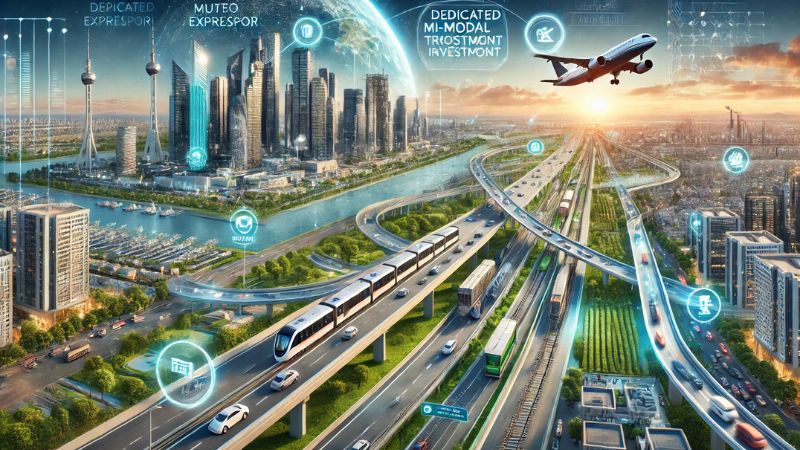India’s 1st smart city Dholera Special Investment Region (DSIR) is establishing new benchmarks for its futuristic urban planning and innovative infrastructure. One of the key enablers of this ambitious project is its state-of-the-art Multi-Modal Transport System (MMTS). Thus, it transforms how goods and people are transported within and outside the region.

What Is A Multi-Modal Transport System?
Contents
A multi-modal transport system integrates different modes of transport such as roadways, railways, seaports, and airways into a single network. It allows a smooth transition between different modes of transport thereby minimizing travel time, cutting down on costs, and optimizing logistics as well as passenger movement across all sectors.
Key Components of MMTS in Dholera
1. Expressway Connectivity: A six-lane expressway will link the city to major urban hubs like Ahmedabad. Fast movement of goods and passengers along this track is possible due to its high speed nature.
2. Dedicated Freight Corridor (DFC): Through dedicated freight corridor connectivity with Delhi-Mumbai Industrial Corridor (DMIC), Dholera gets improved trade efficiency with direct connections to major markets and ports.
3. International Airport: The upcoming Dholera International airport will act as a boost to both passenger and cargo handling needs for the region, thus raising its global connectivity status; it supports the integration of air transport within the overall logistics network like MMTS.
4. Metro and Public Transport: A well-planned metro rail system in addition to smart public transportation will make commuting easy in the city. Intra-city transport options are further improved by electric buses and shared mobility.
5. Seamless Port Access: Dholera’s MMTS is intended for large-scale cargo movement with proximity to major ports such as Pipavav and Kandla, making it an appropriate hub for export-driven industries.
Benefits of MMTS in Dholera
Enhanced Connectivity: Multiple modes of transport integrated seamlessly shorten travel times significantly thus, making Dholera an ideal destination for businesses as well as residents.
Cost Efficiency: Improved logistics result in reduced transportation costs that benefit industries and enhance economic competitiveness.
Sustainability: This emphasis on electric vehicles, eco-friendly modes of transport, and minimized carbon emissions aligns with Dholera’s green city vision.
Economic Growth: Investments are attracted to world-class transport infrastructure facilitating trade and fast-tracking all-around development in the area.
Conclusion
India is built on the foundation of its Multi-Modal Transport System (MMTS). The infrastructural elements that form the basis for smart city development include efficient transport systems and modernized urban centers. Consequently, Dholera’s MMTS has become a benchmark for future smart cities in India that will boost regional trade while attracting more investments in terms of businesses and industries aimed at improving the well-being of its inhabitants. Among other things, such investment will make sure that Dholera is ready for the future due to its great connectivity and strength for economic prosperity.

